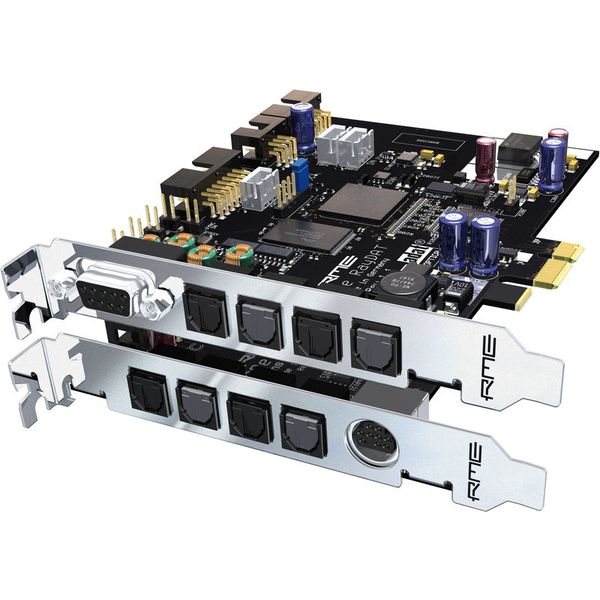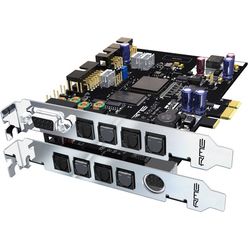72-channel ADAT / AES PCI Express Card
HDSPe RayDAT is a multi-channel, multi-format and multi-tasking tool of superior professional quality, the ideal solution from capture to final mastering. Thanks to separate hardware and additional recording / playback channels, SPDIF (RCA) and AES / EBU (XLR) can be used simultaneously for the first time. RayDAT offers no less than 4 x ADAT I / O (optical), SPDIF I / O, and AES / EBU I / O. No less than 36 input and output channels each.
Two MIDI I / Os and TotalMix, RME's unrivaled DSP-based real-time mixer with hardware-computed level meters and complete MIDI remote controllability complete the package. Of course, HDSPe RayDAT also supports the use of the optional TCO for synchronization to timecode (LTC / video).
Internal ADAT inputs and outputs allow connection of up to two optional TEBs (TDIF Expansion Board). Up to two TDIFs can be connected directly to the computer. Ports available.
HDSPe RayDAT is the redesigned PCI Express version of the previous PCI variant. A completely new PCI Express core supports the full performance of current and superfast serial bus technology. Based on RME's own FPGA development, the card's Secure Flash Option enables future updates even on future hardware and software features.
- 24 bits / 192 kHz
- 4x ADAT I / O 192kHz capable (S / MUX4) + SPDIF I / O 192kHz capable and AES / EBU I / O 192kHz capable
- 2x MIDI I / O
- Up to 72 input and output channels can be used simultaneously
- For WIN 2000 / XP / Vista / 64 and MAC OSX Intel














